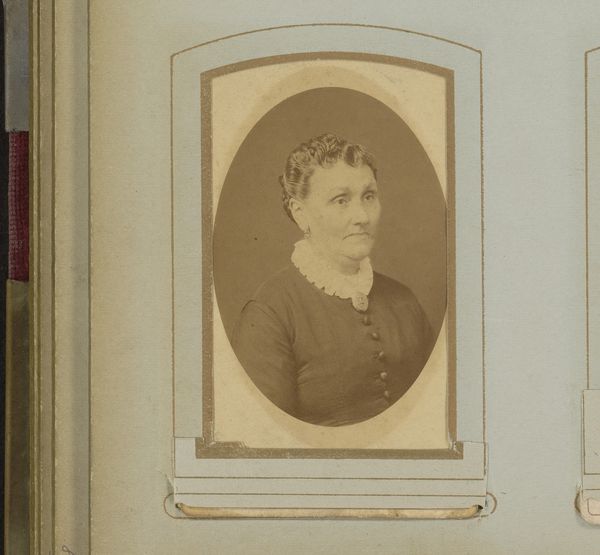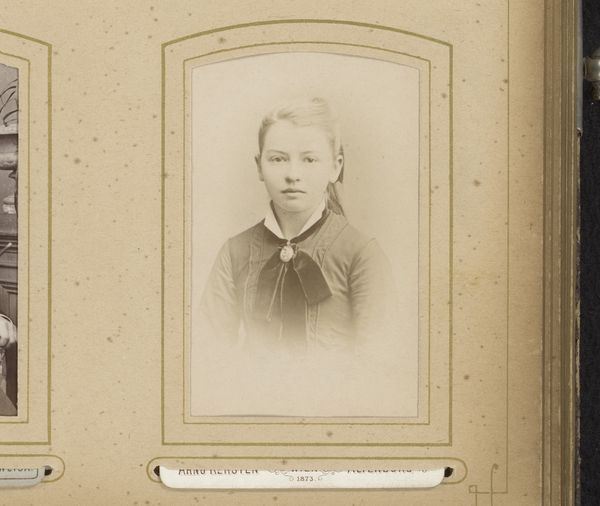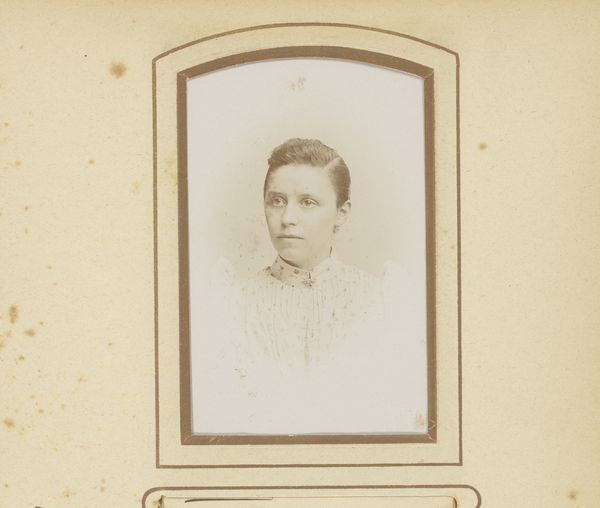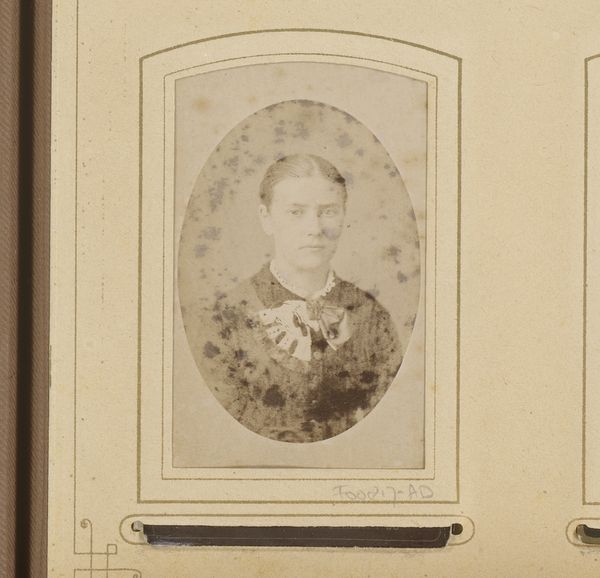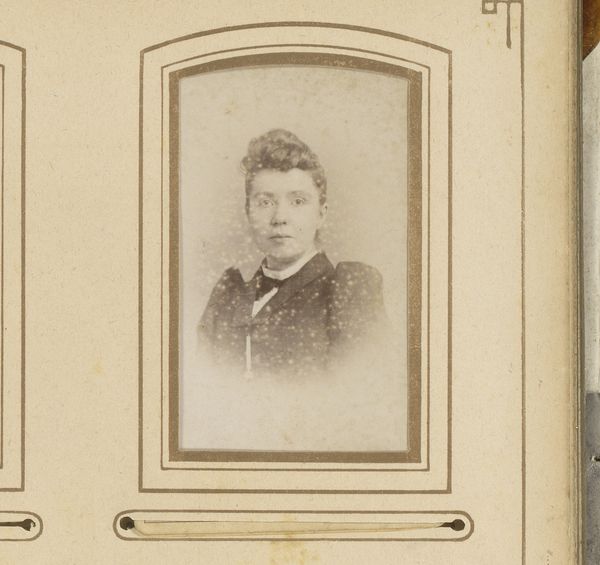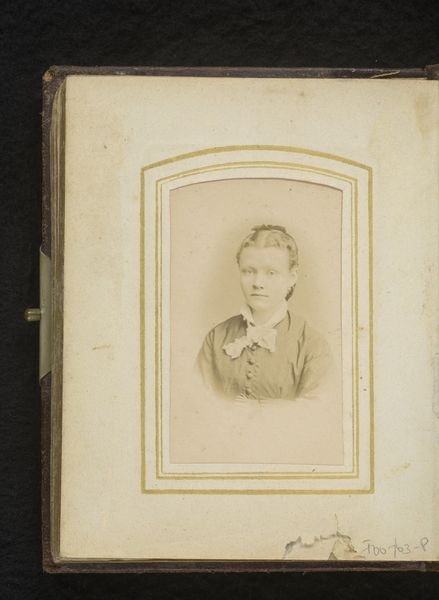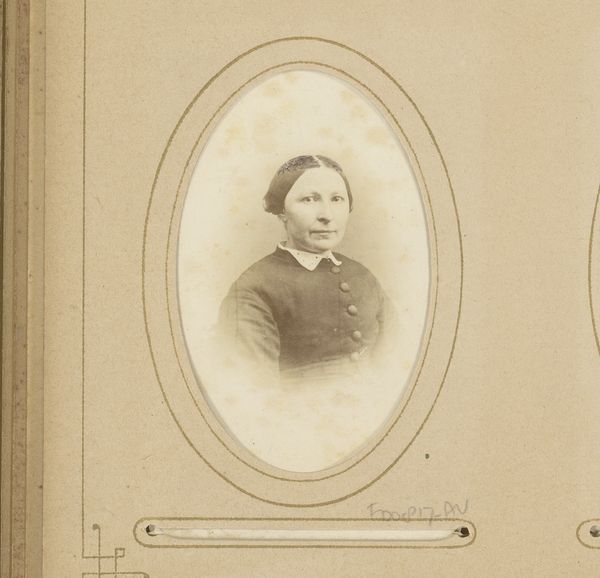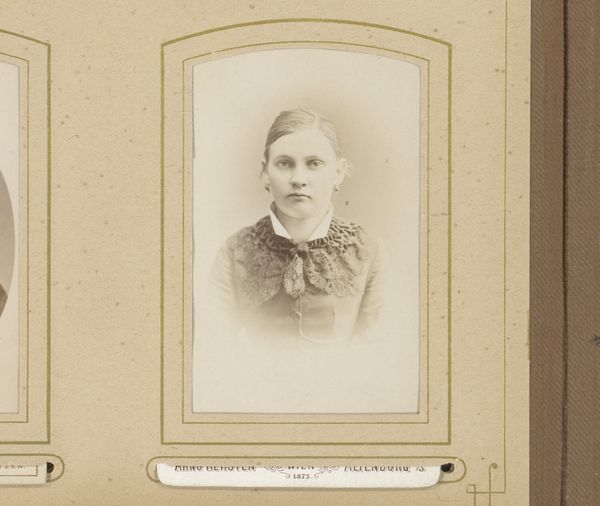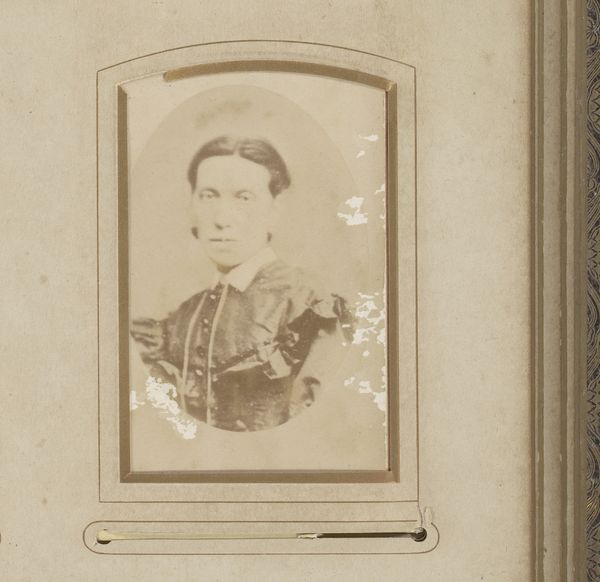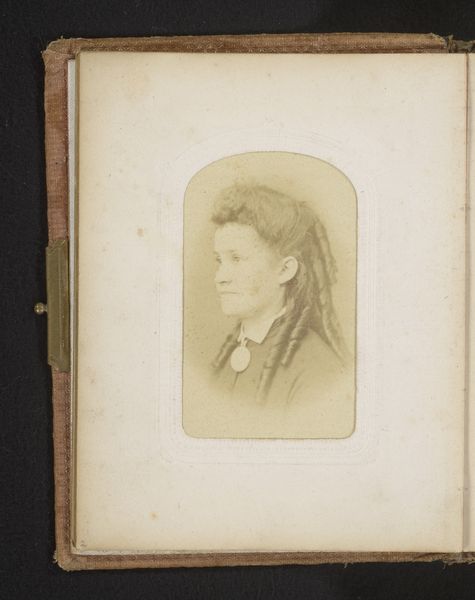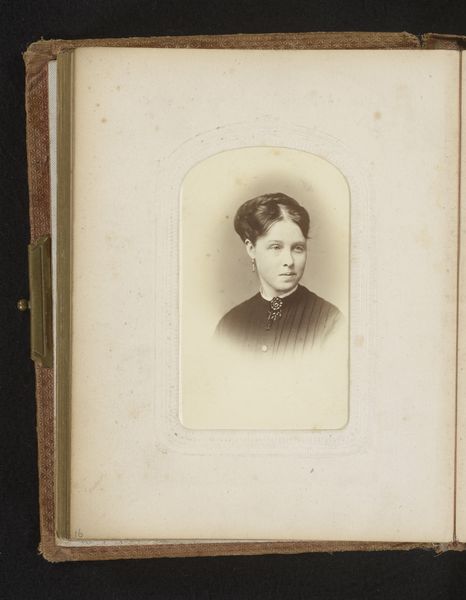
photography
#
portrait
#
water colours
#
photography
#
oil painting
#
watercolor
Dimensions: height 85 mm, width 52 mm
Copyright: Rijks Museum: Open Domain
Curator: Editor: So, here we have “Portret van een jonge vrouw met ketting met medaillon,” dating from 1860 to 1880, by H. Sollendelssohn. It's an intriguing portrait. It looks like photography enhanced by painting, maybe watercolor. I’m curious about how that was done. What are your initial thoughts on this one? Curator: Well, I'm drawn to the layering of materials and processes here. We’re looking at photography – a relatively new technology at the time – being actively manipulated by hand, colored with watercolors, set within an ornamented frame. Consider the implications of combining industrial reproduction with handcrafted artistry. How does that juxtaposition speak to the anxieties or aspirations around industrialization in the mid-19th century? Editor: That’s a really interesting point. I hadn't thought about it that way. It’s almost as if they were trying to soften the starkness of the photograph with something more traditional. Do you think the painted elements were considered somehow… less threatening than the photograph? Curator: Perhaps. Consider that portraiture at the time was largely the domain of the wealthy. The rise of photography threatened that exclusivity. Adding hand-painted elements, decorative borders – these could be ways of both democratizing the medium, making it more accessible, but also elevating it, making it acceptable for those who were used to commissioning painted portraits. Editor: So it’s not just a pretty picture, it's about class and labor, the changing landscape of artistic production. Curator: Precisely. And even further, think about who applied the colors, made the frames, and sold these pieces. Art is always situated in specific socio-economic conditions. It makes one wonder, doesn’t it? Editor: It certainly does! Thanks, I'll definitely think about materiality differently now.
Comments
No comments
Be the first to comment and join the conversation on the ultimate creative platform.
